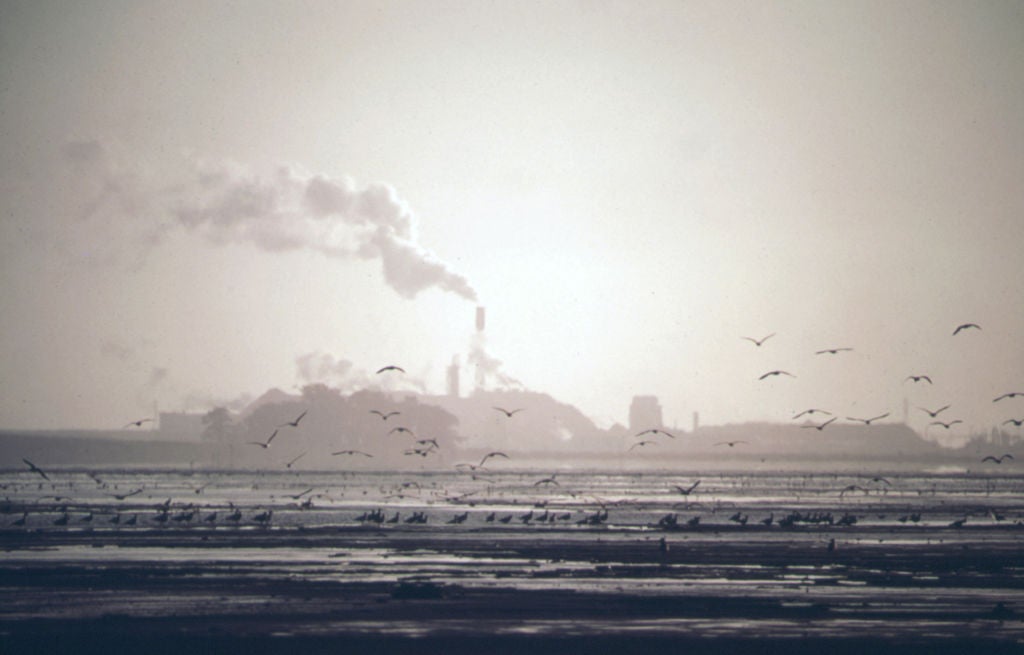California’s solar energy and the Pacific Northwest’s hydropower supplies have cut West Coast power sector emissions, but land use constraints make siting onshore renewables and transmission difficult, and threaten federal and state 100% clean energy goals.
However, the West Coast’s long coastline offers an untapped resource that could help California, Oregon and Washington hit their climate targets – floating offshore wind. With the right policies, this rapidly emerging technology could be harnessed to create high-quality jobs and revitalise coastal communities.

Offshore wind could now take flight along the West Coast thanks to promising tailwinds. California’s AB 525 bill on offshore wind generation directs the California Energy Commission (CEC) to set a planning goal – likely 20,000MW – for 2045, and Oregon’s HB 3375 bill requires its department of energy to identify the benefits and challenges of 3,000MW of offshore wind by 2030. The US Bureau of Ocean Energy Management (BOEM) has begun a leasing process for two wind energy areas in California with an estimated potential of 4,500MW.
This is a good start, but more robust investments and policies are needed to develop a domestic offshore wind industry and accelerate deployment. The newly introduced Inflation Reduction Act of 2022 will help. Its federal tax credits can help floating wind technology achieve commercial scale with cost reductions similar to onshore wind and solar technologies. Additional federal funding for port upgrades and manufacturing clusters can jump-start local industry growth, but making the most of these investments for workers means these policies must be supported by training programmes and strong labour standards.
Combined with state action to incorporate offshore wind into planning and procurement, US federal policies can create high-quality jobs while making offshore wind a core component of cleaning the Western grid.
Creating jobs with offshore wind
Worldwide, 55,000MW of fixed-bottom offshore wind turbines have been deployed, with China, Germany, and the UK home to the largest installations. However, this technology won’t work on the West Coast due to much deeper waters, which require floating turbines affixed to the seabed with long cables.

US Tariffs are shifting - will you react or anticipate?
Don’t let policy changes catch you off guard. Stay proactive with real-time data and expert analysis.
By GlobalDataFloating turbine technology is mature but not as commercially widespread as fixed-bottom turbines. Policy action is needed to scale up floating turbines in the US; researchers expect floating and fixed offshore wind costs will ultimately converge due to technological similarities.
Successful demonstration projects have spurred major floating wind contracts, including 5,000MW off Scotland’s coast. More than 25,000MW of floating offshore wind projects are in the global pipeline and 3,600MW will come online in the next five years. While the US may have missed the boat in fixed-bottom turbine manufacturing, it could still gain an edge in floating turbine manufacturing and secure economic growth as this nascent industry develops.
The University of Southern California’s Schwarzenegger Institute estimates 10,000MW of California offshore wind development would create 120,000–180,000 job-years, including 4,000 permanent operations and maintenance jobs by 2040. Supporting local component manufacturing could create up to 50,000 additional job-years through 2040.
Floating turbine development could also revive historic deepwater port communities. Consider the Port of Humboldt Bay, the only deepwater port between San Francisco and Oregon, which has suffered from the logging industry’s decline. The CEC approved a $10.5m grant for investments to support offshore wind in Humboldt. An economic assessment found terminal upgrades could generate more than 800 local jobs and more than $130m in industry output over a five-year period. This could bolster the entire region.
Upgraded port infrastructure is even more crucial to floating offshore wind than to fixed-bottom turbines, as floating platforms must be assembled on shore and towed to their designated location. This also makes floating turbine manufacturing particularly suited to creating local jobs.
Unleashing US West Coast offshore wind with smart policies
A handful of federal and state policies could speed up commercial deployment of massive, complex offshore floating wind projects while creating high-quality union jobs and much-needed reliable clean power for the western US.
First, Congress should extend the floating offshore wind production tax credit of $25 per megawatt-hour (set to expire at the end of this year) by at least 10–15 years, and accelerate permitting by funding additional staff at the National Oceanic and Atmospheric Administration and US Department of Energy, as proposed in the Inflation Reduction Act. It can also tie strong labour requirements and community benefit agreements to funding for West Coast port upgrades and manufacturing clusters.
The Federal Energy Regulatory Commission and Congress can both support transmission line investments via planning and funding, respectively, including for an offshore subsea cable linking different offshore wind production sites along the West Coast and to the onshore transmission system.
[Keep up with Energy Monitor: Subscribe to our weekly newsletter]
The Biden administration could accelerate BOEM’s leasing process, particularly designating new leasing areas, while still ensuring environmentally responsible siting. Requiring project labour agreements in lease sales can guarantee union workers are part of negotiations.
West Coast states can show the entire world how to deploy floating offshore wind and optimise economic benefits. To do so, they should proactively update offshore wind cost figures and require offshore wind scenarios in planning processes. They can also provide resources for pre-apprenticeship programmes run by the unions to develop the offshore wind workforce and ensure direct pipelines to union jobs in the industry.
In short, the US West Coast could set a model for coordinated federal and state action to jump-start domestic manufacturing and benefit workers. Other regions could look here for how to maximise benefits like port revitalisation. With all West Coast states committed to 100% clean electricity and unmatched offshore wind resources, planning for this technology today will provide an economic boom tomorrow.



